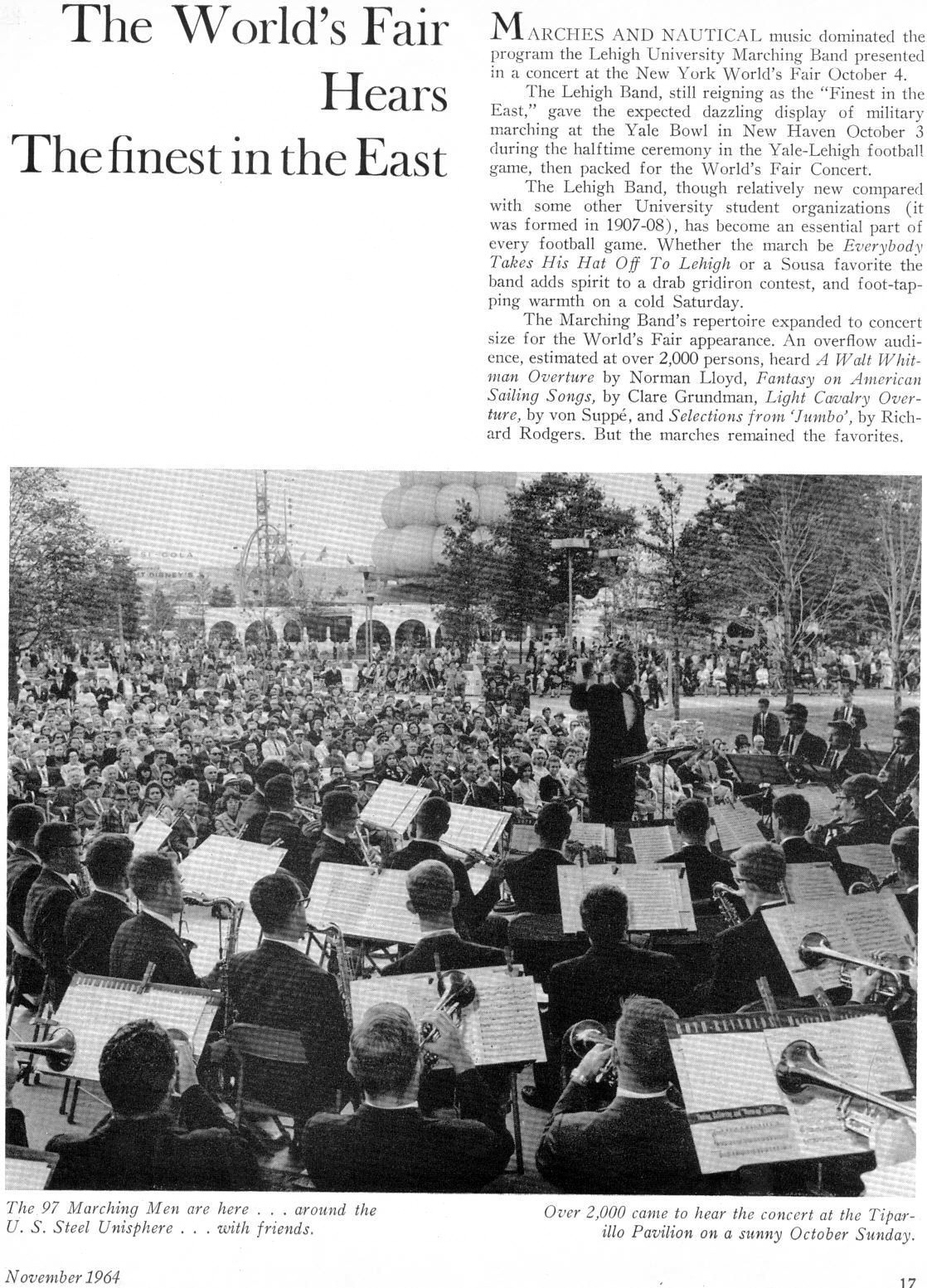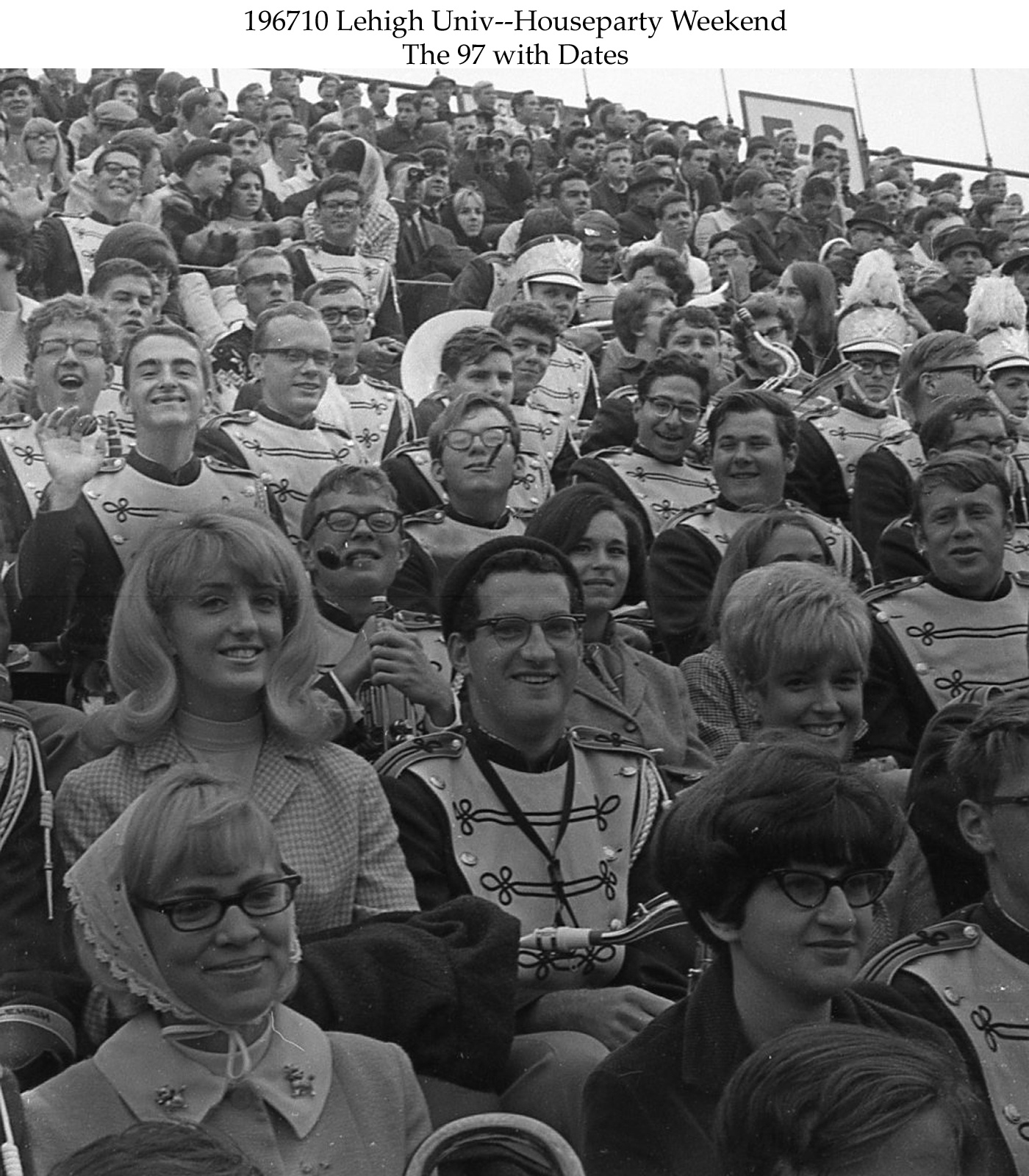Timeline
1906: The first Lehigh University band is founded under the direction of E. E. Ross '08, with the goal of increasing school spirit. Approximately fifteen men meet for the first time in Saucon (now Christmas-Saucon) Hall.
1907: The band makes their first appearance at a football game.
1908: The band performs for Andrew Carnegie, who arrives on campus for “Carnegie Day” to celebrate the construction of Taylor Hall (funded by the Carnegie Foundation). This marks the first of the band's several intersections with the Carnegie name. The first concert performance of the Lehigh Band is also held in the newly-built Drown Hall. The concert is followed by a dance to the band's lively waltzes and two-steps.
1923: The L.U. Band performs their first recorded halftime show, forming a “human L”.
1948: The 97-member marching system is adopted under the direction of Schempf.
1963: The band performs a concert in Carnegie Hall with the Columbia University band.
1964: The band plays at the 1964 New York World's Fair.
1965: The Brown and White (Lehigh's school newspaper) refers to the band as “the Marching 97” for the first time.
1969: The 97 first allows women to join as cheerleaders. Cheerleaders are taken from Cedar Crest College, Moravian College, and other nearby universities, and are considered a part of the band. The band also returns to Carnegie Hall, this time in concert with the Yale University band.
1971: Lehigh University first admits women. The band travels to the Lehigh-Delaware football game by train, serenading onlookers with powerful renditions of “The 1812 Overture”.
1973: The first women join the Marching 97, removing their shakos to reveal their long hair- and thus the coeducation of the band- after a field show set to “There's Nothing Like a Dame”. Lehigh hosts the non-competitive Globe-Times Band Festival at Taylor Stadium.
1977: The band travels to the Pioneer Bowl with the football team and makes their first appearance on national TV. Lehigh beats Jacksonville State 33-0.
1987: The Marching 97 marches its final season in the venerated Taylor Stadium. The band currently performs at home football games in Goodman Stadium.
2014: The band performs at Yankee Stadium for the 150th meeting of the Lehigh-Lafayette football game.
2018: The 97 makes its first trip overseas to perform in the London New Year's Day Parade in England.
Fun facts
After an away football game against Harvard, a Harvard newspaper declared the Marching 97 the "Finest Band East of All Points West". This appellation was embraced by the band and has stuck to this day.
In the 1960s, the concert band (which included almost all of the members of the marching band) would play a concert at whichever school the current band Manager's girlfriend attended.
On the Friday morning before the Lehigh-Lafayette game, the 97 marches around campus to psyche up students for the game by interrupting classes and playing fight songs. This tradition, called EcoFlame, began in the 1970s, when Professor Rich Aaronson asked the band to play for his ECO 001 class.





.jpg)




